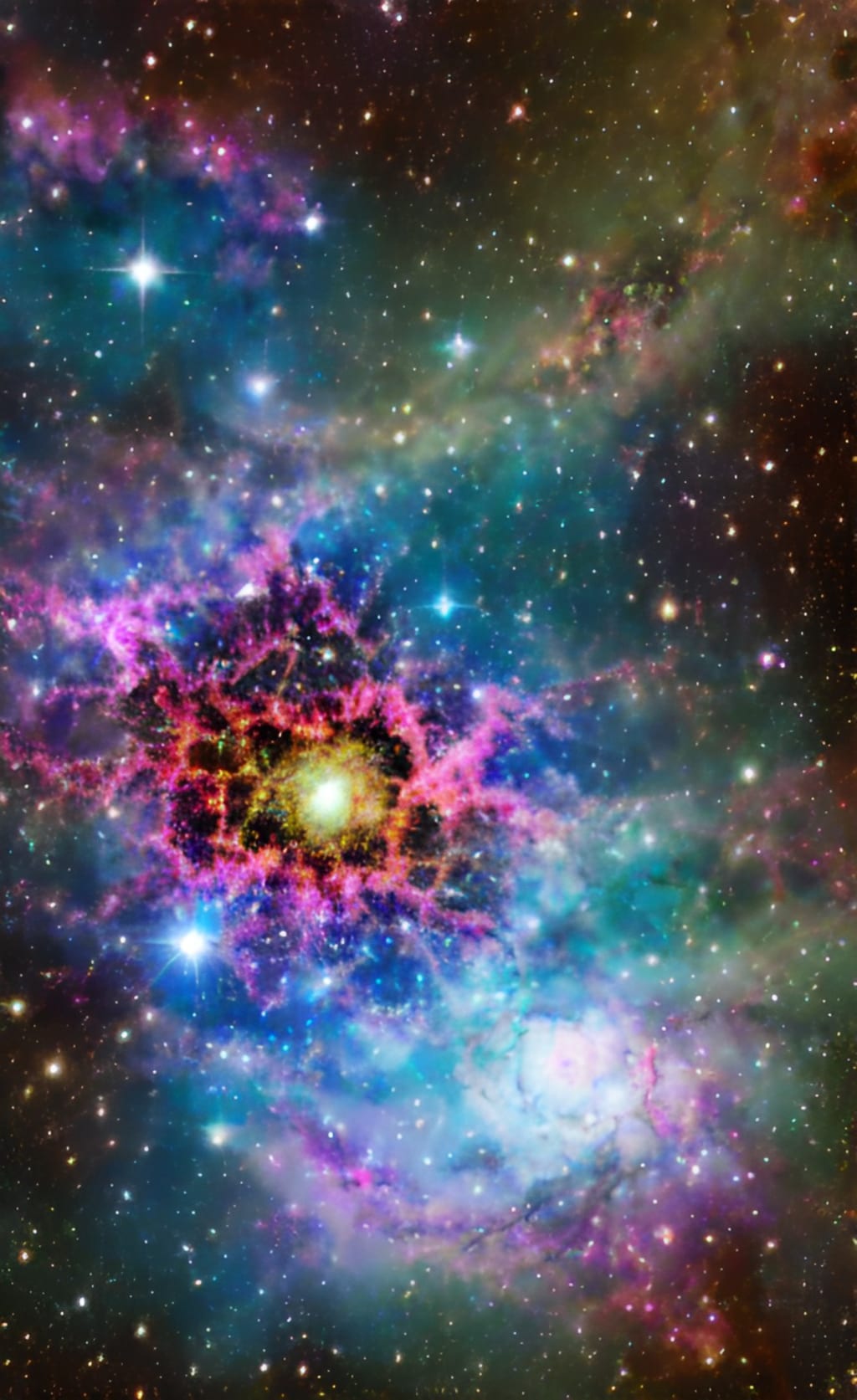Unveiling the Mysteries of Tarantula Nebula: A Closer Look at NGC 2070
The Tarantula Nebula's Cosmic Wonders: A Visual Spectacle

The universe is a vast expanse filled with celestial wonders, and one such marvel is the Tarantula Nebula, also known as 30 Doradus or NGC 2070. Nestled within the confines of the Large Magellanic Cloud, this astronomical phenomenon has captivated astronomers and stargazers alike. Let's embark on a journey to explore this enigmatic H II region, shedding light on its intriguing features and the mysteries it holds.
A Stellar Beginning
The Tarantula Nebula made its debut in astronomical records not as a nebula but as a star. In 1751, the renowned astronomer Nicolas Louis de Lacaille redefined it as a nebula, recognizing its true nature.
The Magnificent Dimensions
Spanning an impressive apparent magnitude of 8, the Tarantula Nebula can be spotted in the constellation Dorado, situated approximately 180,000 light-years away. To put it in perspective, if this nebula were as close to Earth as the Orion Nebula, it would dominate a substantial portion of the night sky, covering an expanse equivalent to 30 degrees, roughly the size of 60 full moons.
Exploring the Heart of Tarantula
At the core of this cosmic marvel lies a mesmerizing spectacle – colossal bubbles crafted from energized gases, elongated threads of dark, inky dust, and massively massive stars. In the heart of it all, a cluster of stars, once believed to be a single entity, nestles closely together. This cluster, designated as R136a or NGC 2070, plays host to a multitude of hot, youthful stars. These stars emit energy-rich light that continually ionizes the nebular gas, while their energetic particle winds inflate the bubbles and untangle the intricately woven threads.
An Epicenter of Stellar Birth
The Tarantula Nebula, also referred to as 30 Doradus, stands as one of the largest known regions of star formation within the Local Group. Every few million years, it bears witness to an extraordinarily vigorous process of star birth, a spectacle that defies the ordinary.
A Palette of Cosmic Colors
Amidst the presence of supernova remnants and a dark nebula, the vibrant hues of red and pink within the nebular gas point to the presence of a massive emission nebula. Surrounding the nebula, one can find young star clusters, filaments, and bubble-like clouds, as well as other regions conducive to the birth of new stars. In recent times, the closest supernova event, SN 1987A, left behind a small yet expanding remnant near the center of the nebula.
In conclusion, the Tarantula Nebula, also known as 30 Doradus or NGC 2070, stands as a testament to the universe's boundless wonders. Its colossal proportions, stunning visuals, and role as a stellar nursery make it an object of fascination for astronomers and a celestial spectacle for all to admire.
Frequently Asked Questions
- How far is the Tarantula Nebula from Earth?
The Tarantula Nebula is located approximately 180,000 light-years away from Earth.
- What is the significance of the Tarantula Nebula's location within the Large Magellanic Cloud?
Being within the Large Magellanic Cloud, the Tarantula Nebula is part of our neighboring galaxy, making it a prominent target for astronomers to study star formation outside our Milky Way.
- Why is the Tarantula Nebula often referred to as 30 Doradus?
It was initially cataloged as a star, known as 30 Doradus, before being reclassified as a nebula.
- What causes the vibrant colors seen in the Tarantula Nebula?
The colorful hues within the nebula are the result of ionized gases and emission nebulae, indicating the presence of hot, young stars.
- Are there other star-forming regions within the Tarantula Nebula?
Yes, in addition to R136a, the Tarantula Nebula contains various star clusters, filaments, and bubble-like structures, all conducive to the formation of new stars.
Unveil the secrets of the cosmos by delving into the captivating Tarantula Nebula. Explore the birthplace of stars and witness the breathtaking beauty of NGC 2070.





Comments
There are no comments for this story
Be the first to respond and start the conversation.